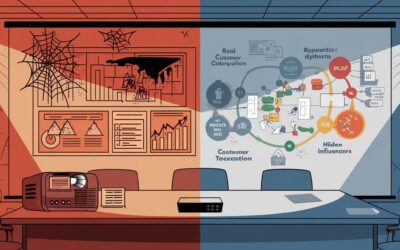HUL’s Pattern of Exiting Instead of Competing
Hindustan Unilever Limited (HUL) is often regarded as a powerhouse of leadership and strategic execution. However, its latest move—spinning off its ice cream business—signals a long-standing pattern: HUL tends to exit highly competitive markets rather than doubling down on innovation. While these moves are positioned as “strategic decisions,” they highlight a recurring issue—the inability to sustain and scale new categories.
A History of Exits: Walking Away from High-Potential Markets
Over the past four decades, HUL has repeatedly exited businesses that later turned into billion-dollar markets. Here are some notable cases:
- Sharp Edge Ergonomix Blades – Sold to Gillette, missing out on the men’s grooming boom.
- Dalda Vanaspati – Once a market leader, sold to Bunge India, while Marico’s Saffola dominated the edible oil space.
- Annapurna Atta – Sold off, while ITC built a $2 billion business in the flour market.
- Captain Cook Salt – An early mover that lost to Tata Consumer and was eventually sold.
- Ayush (Ayurvedic Brand) – Created for India but faded due to lack of long-term vision. Meanwhile, Patanjali became a $2 billion brand.
- Axe Deodorant – Once a leader, now overtaken by Fogg, leading to a slow exit.
- Pureit Water Purifiers – Sold to Eureka Forbes, abandoning a growing segment.
- Stayfree & Carefree – Couldn’t sustain in the female hygiene market, sold to Johnson & Johnson.
- Nihar Hair Oil – A promising category, sold to Marico.
- Rozana Rice Brand – Sold to LT Foods, missing out on the premium rice segment.
- Knorr Noodles – Failed to disrupt the instant noodle market.
- Kimberly Clark JV & Lipton-Pepsi JV – Exited high-potential global partnerships.
What’s Next? Potential Future Exits
HUL’s strategy suggests more divestments may be on the horizon. If the trend continues, we could see exits from:
✔ Oral Care (Pepsodent & Closeup) – Tough competition from Colgate and Patanjali.
✔ Jams & Spreads (Kissan) – Facing stiff rivalry from new-age brands and ITC’s aggressive push.
Why Does This Keep Happening?
1️⃣ Frequent Leadership Changes – New category directors every 3-5 years lead to inconsistent strategies.
2️⃣ Short-Term Financial Focus – Prioritizing quarterly profits over long-term brand building.
3️⃣ Global Parent’s Influence – Focus on dividends and brand fees limits local investments.
Final Thoughts
For a company renowned as India’s biggest marketing powerhouse, HUL’s inability to nurture long-term category leadership is disappointing. Instead of abandoning new categories, it should focus on innovation, market positioning, and sustained brand investment. Otherwise, we may continue to witness iconic brands vanishing from its portfolio.
🚀 Need expert insights on building sustainable brands and category growth? Crescentia Strategists specializes in business transformation, brand management, and market positioning. Contact us today to future-proof your business strategy!






